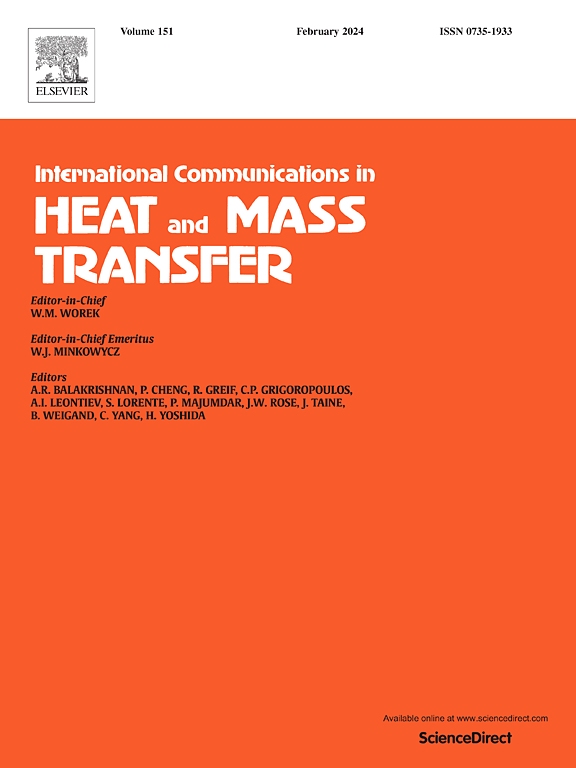Moist air transfer and frost distribution characteristics in low-temperature refrigerator
IF 6.4
2区 工程技术
Q1 MECHANICS
International Communications in Heat and Mass Transfer
Pub Date : 2025-03-20
DOI:10.1016/j.icheatmasstransfer.2025.108875
引用次数: 0
Abstract
The application of low-temperature refrigerators set below −30 °C is increasing. Compared to conventional refrigerators set at 5 °C/−18 °C, these low-temperature units face more severe frost issues within their cabinets, which have received less attention. This study focuses on the frost issue in a low-temperature cabinet at −40 °C. Firstly, tracer gas technology and computational fluid dynamics (CFD) simulation were employed innovatively to obtain the moist air transfer rate. Based on this, the distribution ratio of frost between the cabinet walls and evaporator was analyzed. The results show that the moist air transfer rates entering the cabinet through the gasket, defrosting drainage tube, and door opening-closing process are 35.62 g·h−1, 7.12 g·h−1, and 295.7 g per opening. Among these, 67.5 % of the water vapor condenses into frost on the cabinet walls. This increases the difficulty in opening the door, affecting the user experience. Implementing −30 °C and −18 °C frost transfer modes can reduce the frost ratio on the cabinet walls to 52.7 % and 11.4 %. The average door opening force also decreased from 91.3 N to 70.6 N and 51.1 N. This study first explores laws of the moist air transfer rate and frosting distribution in −40 °C low-temperature refrigerator, establishes theoretical foundations to address the frosting issue within cabinet of such refrigerators.
求助全文
约1分钟内获得全文
求助全文
来源期刊
CiteScore
11.00
自引率
10.00%
发文量
648
审稿时长
32 days
期刊介绍:
International Communications in Heat and Mass Transfer serves as a world forum for the rapid dissemination of new ideas, new measurement techniques, preliminary findings of ongoing investigations, discussions, and criticisms in the field of heat and mass transfer. Two types of manuscript will be considered for publication: communications (short reports of new work or discussions of work which has already been published) and summaries (abstracts of reports, theses or manuscripts which are too long for publication in full). Together with its companion publication, International Journal of Heat and Mass Transfer, with which it shares the same Board of Editors, this journal is read by research workers and engineers throughout the world.

 求助内容:
求助内容: 应助结果提醒方式:
应助结果提醒方式:


